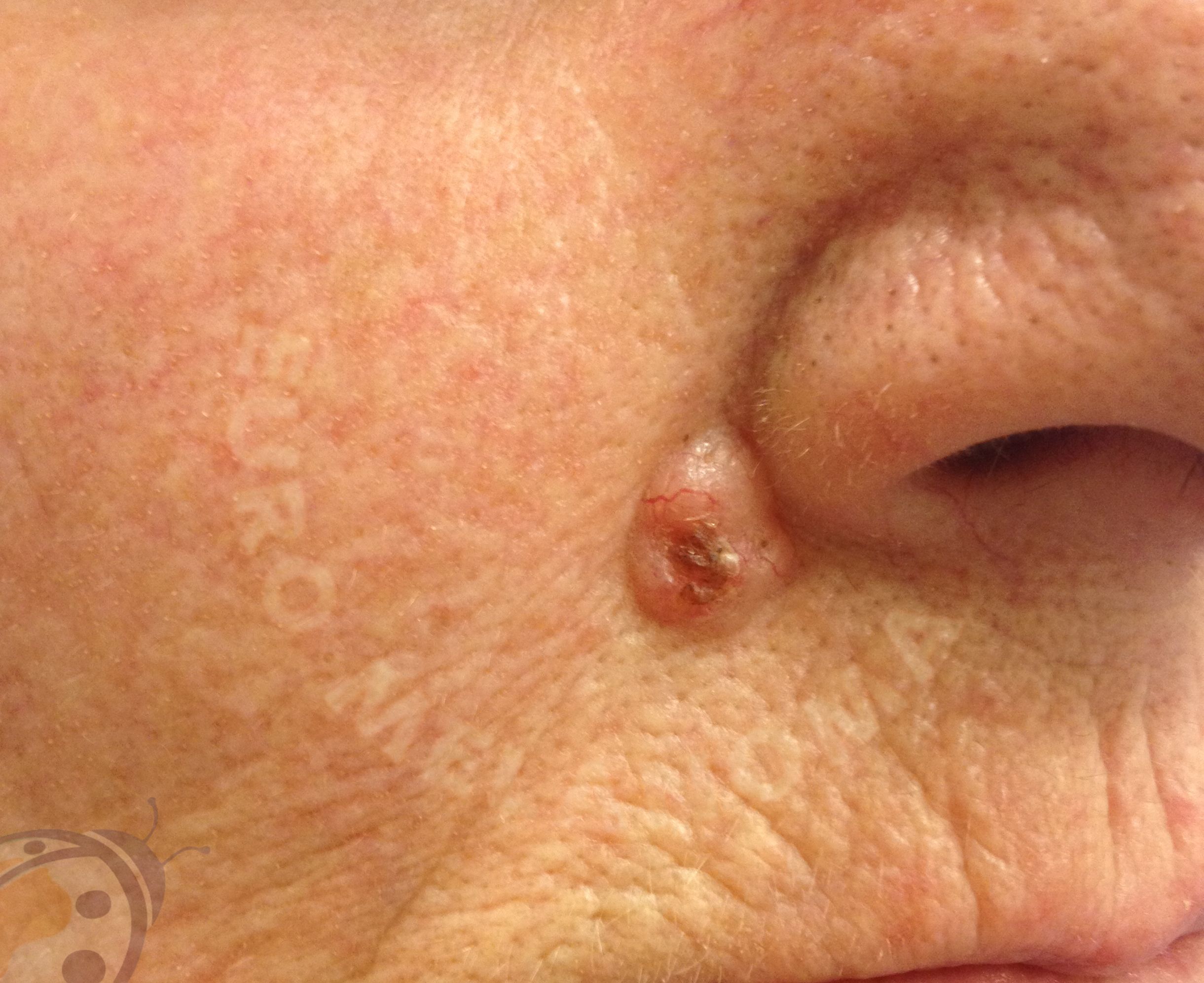Basaliom
Lees meer over een ander soort kanker
This is the most common form of skin cancer, but also the least dangerous. It typically presents as an elevated skin-coloured lump with a shiny, pearl-like edge, a wound that does not heal, or a slightly crusty lump that grows slowly over time. If left untreated, it may ulcerate and invade deeper tissues.

Appearance
There are various forms of basal cell carcinoma.
Nodular basal cell carcinomas present as elevated lumps in the skin with a shiny surface, which often develop a small sore at the centre.
Other, more superficial basal cell carcinomas appear as thin, brown or red patches of skin. They can easily be mistaken for dry skin patches, actinic keratosis, eczema or psoriasis, but they do not respond to moisturising creams or topical steroids. Patients typically notice that they have a sore that won’t heal.
Locations
Basal cell carcinomas most often occur on patches of skin that are frequently exposed to the sun. Nodular basal cell carcinomas are more common on the head and neck, while other types often appear on the trunk, arms or legs.
Evolution
Basal cell carcinomas often grow without causing any discomfort. They are the least dangerous form of skin cancer, but if left untreated, they can grow and destroy nearby or underlying tissues. Treatment is recommended, generally consisting of surgery or other locally destructive therapies.












































